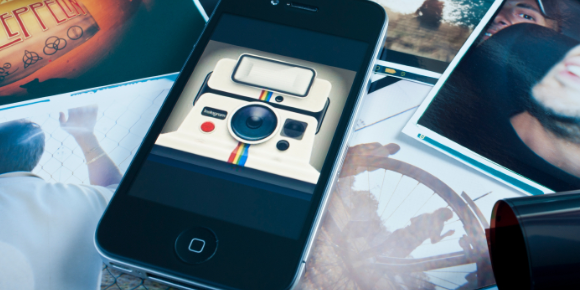It’s become clear that social media sites like Pinterest, Facebook, and Instagram have ushered in visual marketing as a new breakout trend for 2012. Today, businesses have learned that it’s no longer satisfactory to explain their products. If you want real results, you have to show it. The recent proliferation of the visual social media sites has fostered new desires for beautiful photographs and killer design. It really looks like that today “a picture is worth a thousand words.”
How’d we get to this point?
Let’s start back with the blog. “Blogs were one of the earliest forms of social networking where people were writing 1,000 worlds,” according to Dr. William J. Ward, Social Media professor at Syracuse University. With Facebook, posts naturally became shorter. Then came the micro-blogs (like Twitter) and those shortened our updates to 140 characters. Now, according to Dr. Ward “we are even skipping words altogether and moving towards more visual communications with social sharing sites like Pinterest.”
According to Ekaterina Walter’s recent Fast Company article, “This trend toward the visual is influenced by the shifting habits of technology users. As more people engage with social media via smartphones, they’re discovering that taking a picture ‘on the go’…is much less tedious than typing out a status update on a two-inch keyboard.” Additionally, a 2012 ROI Research study found that “when users engage with friends on social media sites, it’s the pictures they took that are enjoyed the most.” According to the study, 44% of respondents are more likely to engage with brands if they post pictures than any other media. It’s become clear that if you want to drive user engagement, then you have be visual.
What does this mean for businesses?
Detavio Samuals, EVP and Director of Client Services at GlobalHue, one of the nation’s top market advertising agencies, explains that today “pictures are a bit like movie trailers for written content.” Pictures today provide a snipped of what an article, brand, site or other piece of content is about, so that you can quickly decide if it’s what you wanted or not. This is so important because people now have access to more information than ever before. As a result, driving user engagement has become more difficult as there are more messages crammed into the same number of hours each day. Which is why having a killer visual is so instrumental, as they can greatly help separate you from the pack.
How can companies take advantage of this?
Well, take a look at designer paper/notebook company, Moleskine – ya, I know a paper company? Could we possibly get any more analogue? Despite what you may think, the company has done some pretty interesting things utilizing the power of visual media. Moleskine’s visual content strategy is focused on user-generated content. They’ve created large-scale projects that users can participate in by posting their own images and videos that’s help in establishing them as “one of the world’s most active, prolific, and creative online communities.”
Don’t’ think that adopting such a strategy is worth it? Take a look at Moleskine’s “What’s In Your Bag” campaign. The idea was that users would take and upload pictures of the contents of their bags to Moleskine’s Facebook page, where they were put into an album. “The project generated thousands of likes and comments as readers looked at the contents of other bags (which included Moleskine notebooks, naturally), and shared photos with their friends.” But visual social media doesn’t just stop there. Search engines are now picking up on this trend and have begun to rank content based on social conversions and sharing, not just websites alone. The recent rise of these platforms shows how important visual content is when communicating online. Walter puts it best by saying, “Brands that can rock visual social media will find themselves market leaders.”

